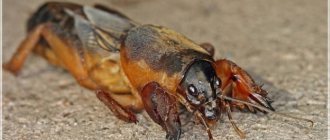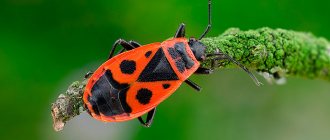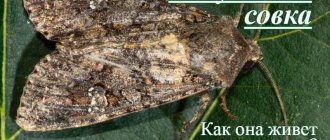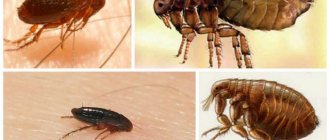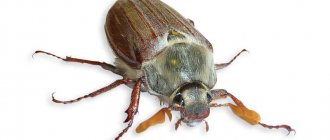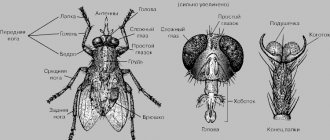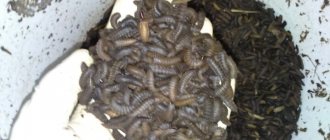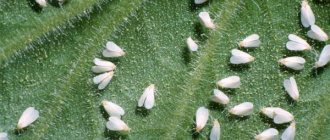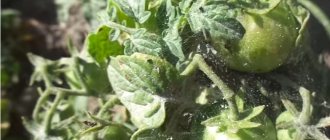Mole cricket or, as it is also called, cabbage weed, is quite widespread in our country. This is a soil pest that prefers to feast on tubers, bulbs and rhizomes of cultivated plants, as well as their seeds, which causes quite serious damage to agricultural land. Most often, mole cricket larvae are found in gardens, where the soil is always well cultivated and fertilized - it is in such soil that it is quite easy for the insect to make its tunnels. But in gardens where there is a lot of turf, this pest, as a rule, does not live, and if it does, it does not last long, trying to fly to the “cozy” garden as quickly as possible.
Appearance
You can see what a mole cricket and its larva look like in our article. This unique creature is unlike any other insect. You can see a photo of the kapustyanka below and get information about who the mole cricket is.
The common mole cricket reaches 7 cm, excluding the mustache and tail. With them, the length of an adult insect is 12 cm. The photo of the garden mole cricket looks terrifying and gives rise to various legends - the insect bites, the poison is deadly, etc.
Kapustyanka Photo and description of the mole cricket:
- Large insects with a cylindrical body shape and folded wings on the back reach a size of 12 cm, but the average body length is about 5 cm.
- Small but bulging eyes, like those of a crayfish, are clearly visible on the head.
- The forelimbs are spade-shaped and equipped with several claws. Strong, massive, designed for digging soil.
- The second pair of limbs are long, thin, and mobile. Helps the insect crawl quickly on the surface of the earth.
- The hind limbs are somewhat longer than the rest and springy. Allows you to jump well.
- The abdomen and head are protected by a dense shell. The abdominal cavity is 2 times larger than the thoracic cavity. The photo of the mole cricket demonstrates this well.
- On the head there are long mustaches and a pair of tentacles. The back of the body ends with long whiskers.
- Two pairs of wings are pressed tightly to the back. The first wings are oval-shaped and short. The second ones are long and narrow. Thanks to them, the mole cricket beetle can fly and rise 5 m high from the ground. The process of how a large insect flies can be described in one word - noisy. Only an adult bear is endowed with such capabilities.
The appearance of individual species may vary slightly. Due to underdeveloped or missing wings, the insect loses the ability to fly. Below is the mole cricket insect in the photo. Different species of this insect are distributed throughout the world. Habitat: fertile soil.
Medvedka
origin of name
These insects became bearers of the title “mole crickets” for their large size, dark brown color, powerful front legs, and slightly downy body.
The second name of the individual is cabbage, attached due to its great love for the roots of young cabbage. Such a bug is also called a cricket - mole (translated from Latin), and for good reason - because the bug with its body structure fully resembles a cricket, it even creates a corresponding sound.
The name “mole” is also natural and quite logical - it is the front legs that help it easily overcome soil layers in search of the required food.
Also, a less common name is “top” - this name justifies its structure of the front legs. After all, they have sharp ends, slightly reminiscent of the sharp fangs of a wolf.
Stages of development
The insect goes through several stages - egg, larva, nymph, adult. The mating season, reproduction begins in May, lasts throughout the warm period. How the mole cricket reproduces looks beautiful and melodious.
The male has the ability to sing and makes real trills at night with different modulations and chirping. In this way it attracts the attention of females. Sexually mature females crawl out of their burrows, rise into the air, and fly towards their fate. Capable of traveling up to 8 km.
Stages of development of the mole cricket: after fertilization, the female begins to arrange her own home and nest. The depth of the structure depends on the characteristics of the soil. In chernozem with high humidity, the shelter is located at a depth of 5 cm. In sandy, dry soil - 15 cm. But it can reach up to 70 cm in depth.
When a mole cricket lays eggs – the common mole cricket lays eggs 2 weeks after fertilization. In one clutch there are from 25 to 60 pieces. Mole cricket eggs are about 1 mm in size. The female provides optimal conditions and takes care of the successful breeding of offspring.
Appearance of the larva
The offspring emerge from the egg after 2 weeks. The mole cricket larvae look helpless - blind, inactive, the color is close to red. The mole cricket larva in the photo is located below.
The mole cricket larva After birth, it immediately begins to feed. They eat plant foods. A few days later, the earthen mole cricket goes through its first molt and turns into a nymph, resembling an adult in appearance. Transformation into a full-fledged individual is a long, dangerous process. Only strong nymphs can cope with it. The weak risk death. Photo and description of the larva are below. Before this, it looks like a caterpillar, resembles a cockchafer larva, but has some differences.
How long does an insect live - the formation of the imago occurs slowly. It takes about 2 years for the larva to mature. During this time, the individual goes through about 10 molts, at the last stage the genitals are formed.
On a note!
An adult lives about 1.5 years. In artificially created conditions – 3 years. The entire life cycle lasts about 5 years.
Habitats
Where the pest lives - the family overwinters deep in the ground. The nest is built at a distance of 2 m from the surface. It can settle down under a pile of manure or directly in it. With the onset of heat, when the soil warms up to 12 degrees, it intensifies its activity. Traces are visible in the garden, the results of sabotage. In countries with warm climates it is active all year round.
Biological methods
The mole cricket has many natural enemies. First of all, these are birds. The greatest damage to the population is caused by rooks, crows, starlings and even ordinary chickens.
Hoopoe catching a mole cricket
It is recommended to let the latter out into the garden from time to time. Naturally, this needs to be done at a time when the chickens themselves cannot harm the crops; for example, before the beginning of periods of active growth of young plants, fruiting, harvesting, etc. Chickens are able to perfectly find mole crickets and their larvae and destroy them.
In addition, hedgehogs, lizards, shrews, moles and ants are involved in the destruction of mole crickets. Attracting, for example, a hedgehog to your garden is very simple - just place a saucer of milk in the garden every evening.
With birds, everything is also relatively simple - birdhouses or nest boxes on the site will significantly improve the situation with any harmful insects, including mole crickets.
There is also a highly specialized enemy of the mole cricket – the Larra anathema wasp. This type of wasp lays eggs exclusively in mole crickets, where their development occurs. After the larva matures, it leaves the host, who soon dies.
Larra anathema wasp, a natural enemy of the mole cricket
This insect does not pose any harm to humans, plants and other inhabitants of the garden, therefore, if you encounter this wasp, there is no need to destroy it. The wasp is quite widespread in the south of the European part of Russia, in the Krasnodar Territory, as well as in Ukraine, Moldova, and Georgia.
If the issue of counteracting mole crickets is very pressing, you can also try to use wasps to combat them. Legumes are used to attract wasps. The “larru” is best attracted to a plant called “partridge pea”.
DIY furniture and other wood products: drawings of benches, tables, swings, birdhouses and other household items (85+ Photos & Videos)
Nest Features
Mole cricket burrows in the garden are a unique structure with numerous passages and exits. The main part looks like a rectangle. There the insect rests, hides from enemies, and breeds offspring. On the surface, the exit or entrance looks like a large or small hole. You can catch a mole cricket in various ways.
The mole cricket's passages on the ground extend from the nest in different directions. They have a spiral shape, the hole goes to the surface. In this way, the female ensures free air circulation and heat supply. To prevent the area from being shaded by plants, the female gnaws the stems, after which the crops dry out. Eggs are laid at the time when seedlings are planted in the beds, which is why many gardeners have to save them.
Mole cricket habitat
On a note!
Numerous labyrinths are located underground at a depth of 5–70 cm. It all depends on soil moisture. If there is a lack of moisture, the larvae either do not hatch or die immediately after hatching.
How to deal with mole cricket larvae
You should not wait until the cubs grow up and give birth to offspring themselves. You need to destroy the mole cricket as soon as you find it, or a nest, or a larva.
There are many ways to get rid of both adult mole crickets and their offspring:
- Find and destroy masonry.
- Set up manure traps. The insect will climb into them for a warm winter. Then it can be taken out and destroyed.
- Lay out cardboard or boards in early spring. The pest will crawl under them in search of warmth.
- Add lime - the mole cricket loves acidic soil, and will immediately leave if the acidity is reduced.
- Fill the hole with soapy water.
In spring and autumn, the garden must be plowed, and during the summer the soil must be deeply loosened. This will help destroy tunnels and mole cricket nests.
If there are a lot of pests, you can use biological products: Boverin or Nemabact. Or chemistry - Grom, Medvedox.
Behavior
The mole cricket spends most of its life underground. There it digs passages, builds labyrinths, and builds nests. It comes to the surface at dusk in warm weather. Looks for food or rises into the air to search for a male.
The body structure of the mole cricket allows it to swim on the surface of the water. She calmly overcomes a large puddle and escapes the flood. But if water gets into the burrow, the insect dies.
The heat-loving insect successfully survives winter frosts through half the soil. With the onset of heat it gradually rises to the surface. The presence of the pest in garden plots can be noticed as early as April. Paths form in the ground, footprints are visible, and plants die.
On a note!
The mole cricket is a timid creature that hides in a hole at the slightest rustle. It is impossible to catch her with your own hands. But, if you build a trap, you can significantly reduce the number of insects on the site.
Main differences
There are a number of differences that help determine what kind of living creature a given larva represents. For example:
- The mole cricket larva does not go through the worm and pupa stage, so it is born as a fully formed brown pest, although over time the color becomes darker. It takes about 2 years for the pest to develop. At the last stage, wings and genitals appear.
- The cockchafer larva is a white caterpillar with clearly visible rings. Gradually increasing in size, the caterpillar grows up to 6 cm in length and seems to curl into a ring. The larva has 3 pairs of legs that grow in the front of the body. The head is brown in color and has a well-developed mouthparts. The main differences need to be known, since many beetles have similar larvae, but they do not harm agricultural crops.
Important point! The larva of the cockchafer develops in the ground for 3 years, and for the first 2 years it does not pose a particular threat to plants. In the 3rd year of its development, it becomes such a voracious creature that it eats everything that comes in its way.
If there are few larvae of both the May beetle and the mole cricket, then they are not able to cause much harm to garden plantings. But if there are a lot of them, then it can turn into a real disaster.
Food preferences
What the mole cricket eats is of interest to gardeners, gardeners, and lovers of flora and fauna. The mole cricket insect is a predator that prefers plant foods.
The mole cricket eats the soil's contents. It feeds on roots, roots, and the green part of plants that are located directly above the soil. Finds food in the depths of the earth - small insects, larvae, earthworms. A delicacy is the pupa of other insects, caterpillars, and butterflies.
Interesting!
Its feeding characteristics make the mole cricket both a useful and harmful creature. In the forest, the insect brings great benefits - it loosens the soil, saturates it with oxygen, and destroys pests. In the garden, in the garden, they are trying to get rid of mole crickets with all their might. In garden beds, it chews through green stems, destroys the root system, and gnaws root crops. Does not allow seedlings to take root or seeds to germinate.
Mr. Summer resident advises: preventing the appearance of mole crickets
Due to the rapid reproduction, vitality of the insect and the structural features of its body, it is quite difficult to fight mole crickets. To prevent the appearance of cabbage, you should perform the following preventive actions:
- Do not use fresh manure as fertilizer.
- When planting in open ground, place the roots of seedlings in cups made from plastic bottles with the bottom cut off.
- Form a mulch layer on the beds. Pine needles work well.
- Add chicken manure to compost heaps, which will prevent the reproduction and appearance of mole cricket larvae.
- Sow marigold seeds around the perimeter of the beds or simply bury leaves or flowers in the soil. You can also use chrysanthemums, which have a specific smell that the earthen crayfish does not like.
- Plow the soil before the onset of frost; cold air is detrimental to insect egg laying.
The mole cricket is a serious pest that creates many problems and destroys crops, however, knowing the characteristics of the mole cricket, its way of life and familiarizing itself with the variety of ways to combat the pest, you can choose the most convenient and effective one.
Natural enemies
The mole cricket lives everywhere, is food for many animals, is susceptible to fungal diseases, and acts as an intermediate link in the reproduction of other insects.
Who eats mole cricket:
- birds;
- toads;
- lizards;
- moles;
- cats;
- any rodent;
- insectivorous mammals;
- spiders.
Fungal diseases can reduce the number of insects. The ticks are annoying and exhausting. Wasps use the insect to breed their own offspring - they lay eggs in the body of the mole cricket. The larvae hatch, suck the juices from the victim’s body, leading to its death.
They are grown in a terrarium for fun or as food for animals and insectivorous inhabitants. In some countries, delicious dishes are prepared from them, and traditional medicine claims that they help cope with tuberculosis.
Fighting methods
Today, gardeners and gardeners have at their disposal a whole arsenal of old folk methods for preventing and combating earthen cancer, as well as a lot of chemicals and devices that allow them to get rid of uninvited guests:
- manure traps;
- beer lures;
- soap and kerosene “baths”;
- aromatherapy;
- “onion shower”;
- installation of wind turbines;
- sound repellers;
- insecticidal preparations.
Fighting insects that survived mammoths and dinosaurs is not so easy. Adherents of organic farming are recommended to use time-tested folk methods, and only as a last resort switch to chemicals.
Harm
A pest can ruin any crop and ruin all the gardener’s work. Adult insects and larvae dig numerous mines underground. They gnaw through all the seeds, rhizomes, and root crops that they encounter along the way. The cabbage plant especially loves cucumber seeds, as well as cabbage, peppers, tomatoes, and eggplants. Potatoes and other root crops suffer greatly from the activity of the mole cricket. This beetle gnaws out the cavity of the fruit, making it unsuitable for storage.
The insect can ruin the grain harvest in the fields, as well as melons and legumes. This earthen crustacean does not mind eating the roots of fruit trees (cherry, apple trees), as well as pine needles, beech, and oak. In 1 day, a mole cricket can damage 15 plants and destroy large planting areas in a short time. Cabbage grass is especially dangerous in a greenhouse. All favorable conditions have been created there for the rapid growth of its population.
